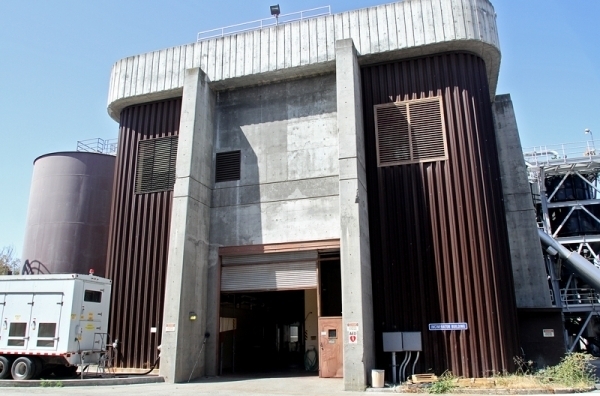Palo Alto will celebrate its most significant environmental milestone in years on June 5, when the city retires the two incinerators that have been burning local sewage in the Baylands for nearly half a century.
The incinerators, which are considered the biggest single source of greenhouse-gas emissions, have been burning sludge from Palo Alto, Stanford University and surrounding cities since 1972, releasing about 20,000 metric tons of carbon dioxide annually in the process. For Palo Alto, which takes great pride in its environmentalist credentials and designated climate change as one of its top priorities for 2019, the facilities are also a colossal source of embarrassment. The city's Regional Water Quality Control Plant is only one of two sewage-treatment facilities in the state that still rely on incinerators.
That will change on June 5, when Mayor Eric Filseth flips the switch on the 47-year-old facilities for the final time. Instead of being burned, sludge will soon be dewatered and shipped out of the city to farming areas, where it will be used to produce agricultural soil supplements, according to Public Works Department.
The city also plans to celebrate at the 10 a.m. ceremony the new sludge dewatering and truck load-out facility that is making it possible to eliminate the incinerators. The council approved a $23 million construction contract two years ago. The project was also aided by a $20 million low-interest loan from the California State Water Resources Control Board.
The new facility at 2501 Embarcadero Way was constructed by the firm C. Overaa and Company and will serve Palo Alto and its five partner agencies: Los Altos, Los Altos Hills, Mountain View, Stanford and the East Palo Alto Sanitary District.
According to Public Works, the water-treatment plant cleans and treats an average of 18 million gallons of wastewater a day from the 220,000 residents, industry and businesses in its service area before the processed water is discharged into the San Francisco Bay.
Assistant Public Works Director Phil Bobel estimated that when it comes to reducing carbon dioxide emissions, the updated treatment process is equivalent to reducing emissions from 3,000 passenger cars.
"Eliminating incineration is another step towards Palo Alto's goal of reducing greenhouse gasses by 80% by 2030," Bobel said in the statement.
Bobel also noted in that the change in the city’s treatment process will eliminate 700 tons of incinerator ash, a hazardous waste. This, he said, represents an 85 percent reduction of hazardous waste from City-owned facilities.
The public is invited to the June 5 ceremony at 2501 Embarcadero Way.



Comments
Palo Verde
on May 22, 2019 at 10:13 pm
on May 22, 2019 at 10:13 pm
"Palo Alto switches from burning sewage to shipping it out" ( lede to full article )
Actually trucking it out, ships of the highway. Is this one 15-ton truckload per day or what?
That's the number I get from release of "20,000 metric tons of carbon dioxide annually".